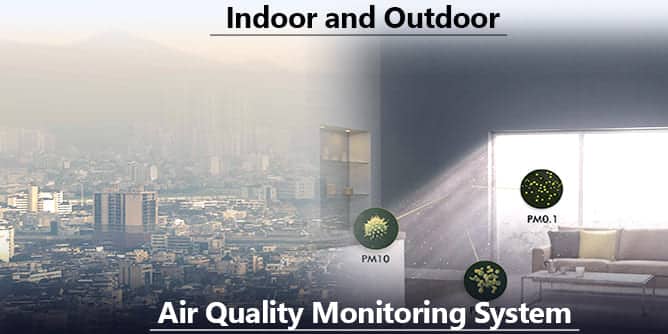Today’s world has made environmental issues important to our industries, governments, and communities, making air quality an important sign of ecological well-being and public health. Air Quality Monitoring Stations for monitoring air quality are essential for analyzing, controlling, and planning our daily actions regarding the air we breathe.
These technologies support not only the identification of pollutants but also the management of health risks, the avoidance of air quality disasters, and the development of cleaner air policy. We’ll discuss what air quality monitoring systems are, their importance, and their effects on public health and policy-making in this blog.
What is the quality monitoring system ?
An advanced network called an air quality monitoring system is made to measure, log, and frequently report the levels of different air pollutants. This helps to provide an overall evaluation of the quality of the air in a given area. To identify and measure the quantity of airborne pollutants, including particulate matter , nitrogen dioxide, sulfur dioxide, carbon monoxide, ozone, and volatile organic compounds, these systems make use of a variety of sensors and sampling equipment.
In addition, as air quality monitoring stations provide vital information for researching the effects of air pollution on the environment and human health, it is essential for scientific research. This study has the potential to impact public health recommendations and drive more focused initiatives meant to lower exposure to dangerous chemicals.
As a result of continuous technological advancements, air quality monitoring systems are progressively integrating artificial intelligence and more complex analytical tools to increase the granularity of data available and forecast accuracy, providing more resources for environmental management and public health protection.
Components of an Air Quality Monitoring System :
The main parts that identify and measure pollutants are sensors. Certain sensors are more accurate and dependable than others, and some are even able to identify low amounts, making them ideal for extremely sensitive locations like schools and hospitals.
Data Collection Systems:
This part handles the sensor data collection. It transforms the unprocessed data into information that executives and analysts can use.
Data management systems are computer programs designed to store, organize, and process data. They often provide full analyses and real-time data visualization, both of which are necessary for making wise decisions.
Communication networks:
They guarantee the efficient and safe transfer of data collected from multiple sources to a central system for analysis.
Benefits of Air Quality Monitoring Station :
Public health:
There is a clear link between health problems and air quality. In addition to decreasing lung function and causing asthma, poor air quality can raise the risk of heart and lung diseases. By identifying pollution hotspots and periods of poor air quality, monitoring makes it possible to provide advisories and take prompt action.
Environmental Impact:
Acid rain, smog, and other pollution-related phenomena can have a significant negative impact on ecosystems. Monitoring air quality helps evaluate the health of these systems. This is necessary to protect diversity and keep natural environments in balance.
Safety Compliance:
To safeguard human health, numerous nations have set legally-mandated air quality standards. Monitoring systems give us the information we need to make sure these rules are followed and to take appropriate legal steps against those who break them.
Indoor Air Quality Monitoring
Indoor air quality monitoring is important for ensuring healthy living and working environments, reducing exposure to pollutants, and preventing respiratory and other health issues, thereby enhancing overall well-being and productivity.
Outdoor Air Quality Monitoring
Outdoor air quality monitoring is necessary because it provides information about the causes of pollution, evaluates health hazards, and helps develop policies to enhance the quality of the air, safeguarding public health and the environment.
The Future of Monitoring Air Quality :
Air quality measurement devices are trending toward technological advances in the future, such as Internet of Things (IoT) integrations that enable the common adoption of inexpensive sensors in both urban and rural environments. As a result, data becomes more accessible, and localized air quality management is made possible. Furthermore, developments in AI and machine learning are improving these systems’ predictive capacities, enabling the prediction of trends in air quality and the implementation of preventative actions.
Price of air monitoring device :
The exact pollutants an air quality monitoring system detects, the sophistication of the technology employed, and the application (residential, commercial, or industrial) for which it is intended can all have a significant impact on the system’s cost. Prices for entry-level indoor air quality monitors, which measure typical pollutants like humidity, carbon dioxide, VOCs (volatile organic compounds), and particulate matter, may depend on your needs.
If you are looking for air quality monitoring stations at affordable prices then you are at the right place, at adrtechindia.com you can find the device according to your needs.
In summary
The need for air quality measurement devices is greater than ever as industrial activity and population both rise. These devices are the foundation of efforts to protect the environment and human health because they provide accurate, immediate information on air pollution levels. Purchasing modern air quality monitoring equipment and using its knowledge to everyday decision-making and public policy can result in a healthier, more sustainable future for all.






